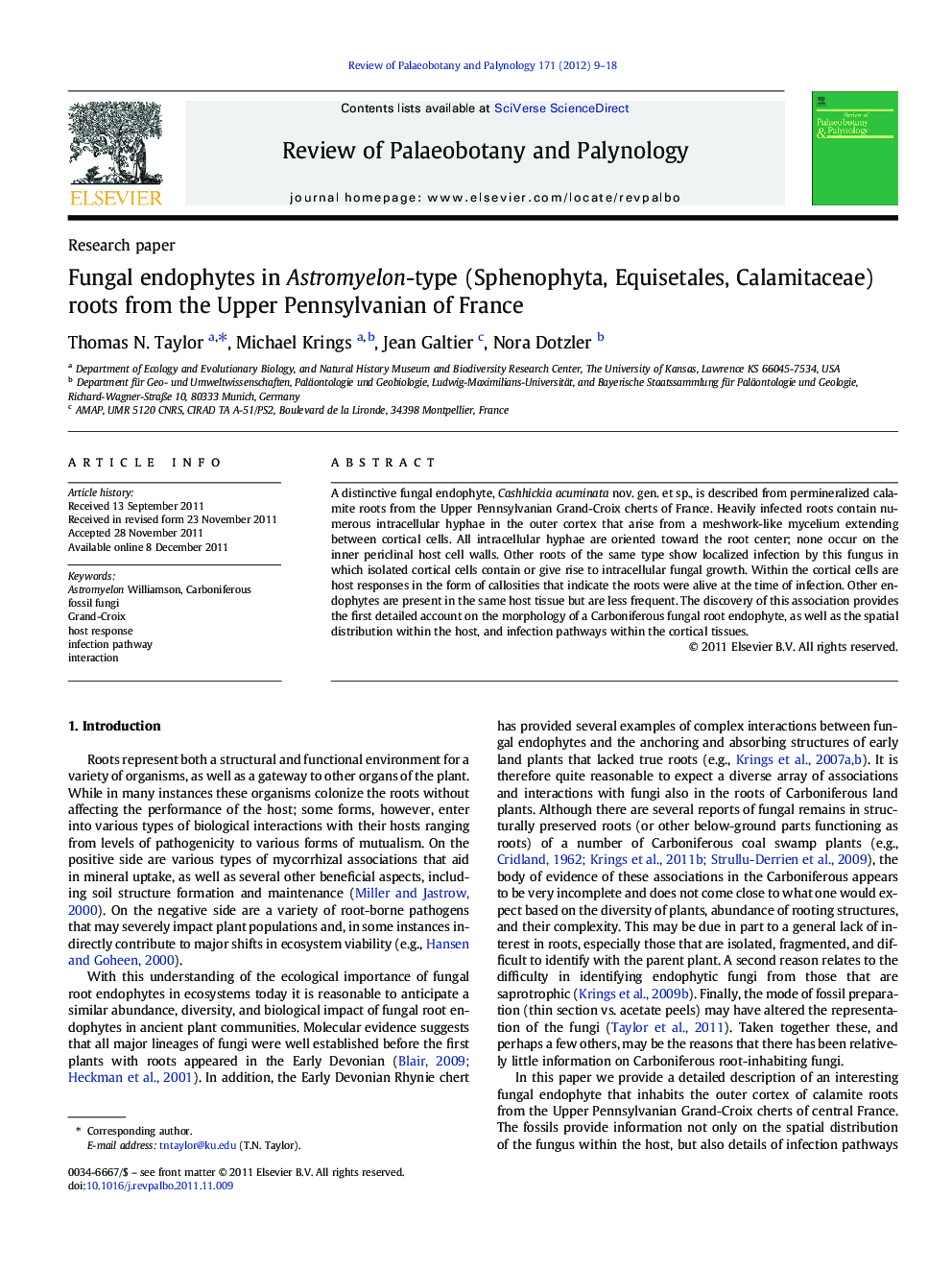| Article ID | Journal | Published Year | Pages | File Type |
|---|---|---|---|---|
| 4750476 | Review of Palaeobotany and Palynology | 2012 | 10 Pages |
A distinctive fungal endophyte, Cashhickia acuminata nov. gen. et sp., is described from permineralized calamite roots from the Upper Pennsylvanian Grand-Croix cherts of France. Heavily infected roots contain numerous intracellular hyphae in the outer cortex that arise from a meshwork-like mycelium extending between cortical cells. All intracellular hyphae are oriented toward the root center; none occur on the inner periclinal host cell walls. Other roots of the same type show localized infection by this fungus in which isolated cortical cells contain or give rise to intracellular fungal growth. Within the cortical cells are host responses in the form of callosities that indicate the roots were alive at the time of infection. Other endophytes are present in the same host tissue but are less frequent. The discovery of this association provides the first detailed account on the morphology of a Carboniferous fungal root endophyte, as well as the spatial distribution within the host, and infection pathways within the cortical tissues.
► A fungal endophyte in the cortex of Carboniferous calamite roots is described. ► Intracellular hyphae arise from an apoplastic mycelium. ► Infected roots show different levels of fungal colonization. ► Host responses indicate a biotrophic nutritional mode of the fungus. ► First detailed account on the infection pathways of a Carboniferous root endophyte.
